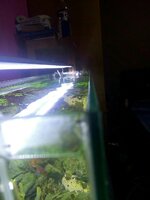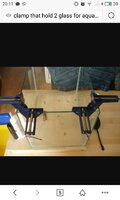Hey guys I'm getting the funds together to build my own aquarium. I'm just wondering how thick the glass will have to be? It will be a rimless with no bracing.
Dimensions will be 900x600x450h
Will 10mm toughened be fine?
Any help would be great! Thanks 🙂
Sent from my iPhone using Tapatalk
Dimensions will be 900x600x450h
Will 10mm toughened be fine?
Any help would be great! Thanks 🙂
Sent from my iPhone using Tapatalk






 planning on build my third tank, this time should be 120*40*40 or 150*50*50. I like to build my own tank to save money and I can get any size and shape I want.
planning on build my third tank, this time should be 120*40*40 or 150*50*50. I like to build my own tank to save money and I can get any size and shape I want. 

